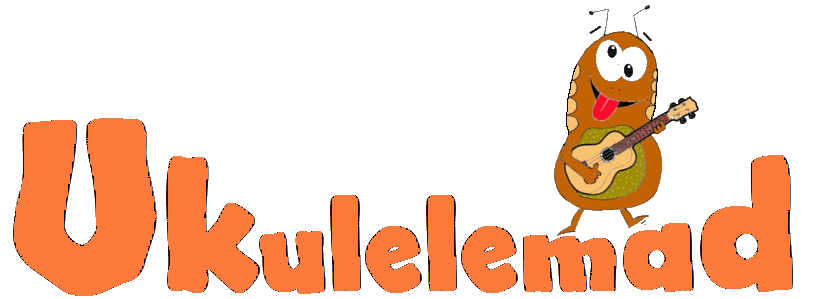Basics
How to hold a Ukulele
There is no right or wrong way to hold a Ukulele. How you choose to hold your Ukulele will depend on a number of things. Whether you are sitting or standing, your build, what size Ukulele you play, and even what you are wearing. For example: if you are wearing a tee shirt and sitting down it will be easier than if you are standing outdoors wearing a thick coat. You may prefer to use a strap which can help especially if you are standing. Experiment to see what works best for you, but make sure the position you choose allows you to play in a relaxed manner. If you experience tension or stress while playing try another position.
How to hold a Ukulele
Tuning a Ukulele
Tuning a Ukulele
As a beginner, tuning a ukulele is best done with a clip on tuner. These are easy to use, cheap and readily available. Get into the habit of tuning your Ukulele each time you play, that way your ear will become accustomed to how it should sound when it is tuned correctly. Don’t get used to playing an instrument that is out of tune.
Clip on tuners often have the letters U, G, V, B, C showing on the display. These are presets that can be selected.
U – Ukulele. Will only tune notes: G, C, E, A, (Ukulele tuning)
G – Guitar. Will only tune notes: E, A, D, G, B, E (Guitar tuning)
V – Violin. Will only tune notes: G, D, A, E (Violin tuning)
B – Bass. Will only tune notes: E, A, D, G (Bass tuning)
C – Chromatic. Will tune all notes in the music scale.
This short video will show you how to tune a ukulele with a tuner.
Strumming
Don’t worry too much about strumming to begin with, just use simple down strokes. As you become more confident you can add up strokes to make things more interesting. Start off slowly and practice strumming and changing between chords cleanly and without slowing down. Once you achieve this you will be able to build up your speed, and work on more advanced strumming patterns.
How to Strum a Ukulele
Easy Ukulele Chords
Beginners Ukulele Chords
There are thousands of different chords that you could learn, but don’t despair. If you learn four or five chord shapes you will be able to play hundreds of songs. Add a further couple and hundreds more will be available for you to play. Start off with the following – C, F, G7 and C7. Use the ‘Chord Chart‘ to learn these four shapes. Practice them until you can play them cleanly, and change between them confidently. Once you are ready, try out some of the songs on the ‘Songs’ page. You should aim to play them cleanly and without slowing down to change between chords. This will be difficult at first so play at a speed that you can manage. You will be able to increase the speed as your confidence grows.
Chord practice
C, F, G7, C7.
Play along with this video to practice playing and changing between these chords. The video starts with two downstrokes per measure and works up to four downstrokes and four upstrokes per measure. Once you can play through the sequence confidently, try some of the songs on the song page like, Jamaica Farewell, Oh Susanna, Waltzing Matilda, King of the road, Sloop John B etc. All of these songs and more use these chords. Have fun.
